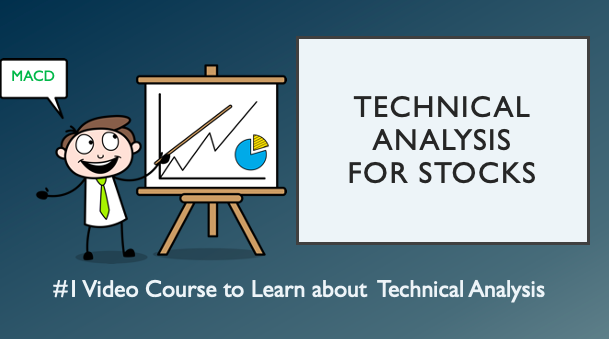Book Summary of Trade Your Way to Financial Freedom
by Van K. Tharp

What is this book about?
"Trade Your Way to Financial Freedom" by Van K. Tharp is a comprehensive guide to developing a personalized trading system that aligns with your individual personality, objectives, and risk tolerance. The book emphasizes the importance of psychological factors in trading success, alongside system development and risk management. It covers a wide range of topics, from understanding your own biases and setting objectives to the conceptualization and development of trading systems, including the crucial role of position sizing. The book aims to empower traders to find their unique path to trading success by focusing on internal control and self-awareness.
Who should read the book?
This book is ideal for both novice and experienced traders who want to improve their trading performance by developing a trading system that suits their personal needs and psychology. It is especially beneficial for traders who have struggled with conventional methods or who seek to understand the deeper psychological aspects of trading. Investors who are looking to refine their strategies and gain better control over their trading outcomes will also find this book valuable.
10 Big Ideas from the Book
- The Holy Grail of Trading: The "Holy Grail" is not a magical system but the discovery of a trading method that fits your unique personality and objectives.
- Self-Mastery is Key: Success in trading is deeply tied to self-awareness and internal control rather than external market conditions.
- Expectancy and R Multiples: Understanding and applying expectancy in trading helps in evaluating and improving trading systems.
- Position Sizing: Position sizing is crucial for managing risk and optimizing returns, and it must be tailored to the trader’s personal risk tolerance and goals.
- Psychological Biases: Traders must identify and overcome their psychological biases, such as overconfidence and loss aversion, to succeed.
- Importance of Exits: The real profits in trading come from how you exit positions, not how you enter them.
- Modeling Success: Learning from the common traits of successful traders can help develop a winning strategy.
- Risk Management: Protecting capital through effective risk management strategies is more important than being right on every trade.
- Customizing Your System: There is no one-size-fits-all trading system; your system should reflect your personal strengths and weaknesses.
- Continuous Improvement: Constantly refining and improving your trading system based on feedback and results is essential for long-term success.
Summary of "Trade Your Way to Financial Freedom" by Van K. Tharp
"Trade Your Way to Financial Freedom" by Van K. Tharp is a highly regarded book in the trading community, known for its deep exploration of the psychological, strategic, and technical aspects of trading. Tharp emphasizes that successful trading is less about finding a perfect system and more about developing a system that fits the trader's unique personality, risk tolerance, and goals. Below is a comprehensive summary of the book, highlighting key insights, relevant metrics, and important ratios that Tharp discusses.
Key Insights from the Book
-
The Importance of Self-Mastery:
- Insight: Tharp stresses that the most significant factor in trading success is not the market itself but the trader's psychology. Emotions like fear, greed, and overconfidence can derail even the most well-conceived trading plans.
- Application: Traders must develop self-awareness and discipline to manage these emotions effectively.
-
The Concept of Expectancy:
- Insight: Expectancy is a critical metric that measures the average amount a trader can expect to win (or lose) per dollar risked. It reflects the long-term profitability of a trading system.
- Expectancy Formula: Expectancy=(Probability of Win×Average Win)−(Probability of Loss×Average Loss)
- Significance: A positive expectancy means that, over time, the system will likely be profitable. This is a cornerstone concept for evaluating any trading system's effectiveness.
-
The Role of R Multiples:
- Insight: An R multiple is the ratio of the profit or loss of a trade relative to the initial risk. It helps traders understand the efficiency of individual trades and the overall system.
- R Multiple Formula: R Multiple = Profit or Loss / Initial Risk
- Significance: High R multiples indicate that a trader is achieving good returns relative to the risks taken, which is crucial for long-term success.
-
Position Sizing Strategies:
- Insight: Position sizing is how much of your capital you allocate to a particular trade. It is a critical aspect of risk management and directly influences a trader's ability to survive and thrive in the markets.
- Kelly Criterion for Position Sizing: Kelly Percentage=W−(R1−W) Where:
- W = Probability of winning
- R = Win/Loss ratio
- Significance: Proper position sizing helps in balancing the trade-off between risk and reward, ensuring that no single trade can cause a catastrophic loss.
-
Psychological Biases:
- Insight: Tharp identifies several cognitive biases, such as overconfidence, confirmation bias, and loss aversion, which can lead to poor trading decisions. Recognizing and mitigating these biases is essential for objective decision-making.
- Application: Traders should develop strategies to counteract these biases, such as setting predefined rules for entering and exiting trades and conducting regular self-assessment.
-
The Importance of Exit Strategies:
- Insight: How and when you exit a trade is more important than how you enter it. Effective exit strategies enable traders to maximize profits and minimize losses, which is critical for maintaining a profitable trading system.
- Application: Traders should have clearly defined exit strategies as part of their trading system, including stop losses and profit-taking points.
-
Modeling Successful Traders:
- Insight: By studying and modeling the behaviors and strategies of successful traders, one can replicate their success. Tharp suggests that successful traders share common traits, such as discipline, a focus on risk management, and a clear understanding of their trading system.
- Application: Learn from the habits and strategies of top traders, but adapt them to fit your unique personality and trading style.
-
Risk Management as a Cornerstone:
- Insight: Effective risk management is the foundation of any successful trading system. It involves not only position sizing and exit strategies but also an overall approach to managing and mitigating risk across all trades.
- Key Metric:
- Risk of Ruin: The probability of losing all trading capital. Understanding and managing this risk is crucial for long-term survival in trading.
- Application: Implement risk management strategies that ensure you can survive losing streaks and stay in the game for the long term.
-
Customizing Your Trading System:
- Insight: There is no one-size-fits-all trading system. Tharp emphasizes the importance of developing a system that is tailored to your specific goals, risk tolerance, and psychological makeup.
- Application: Continually refine your trading system to ensure it remains aligned with your evolving goals and the changing market environment.
-
Continuous Improvement and Adaptation:
- Insight: Trading is a dynamic activity that requires constant learning and adaptation. Markets change, and what worked in the past may not work in the future. Tharp advocates for an iterative process of continuous improvement.
- Application: Regularly review your trading performance, identify areas for improvement, and adjust your system accordingly.
Relevant Metrics and Key Ratios
-
Expectancy:
- Formula: Expectancy=(Probability of Win×Average Win)−(Probability of Loss×Average Loss)
- Significance: This metric is crucial for evaluating the long-term profitability of a trading system. A positive expectancy indicates that the system is expected to be profitable over time.
-
R Multiple:
- Formula: R Multiple = Profit or Loss / Initial Risk
- Significance: R multiples allow traders to evaluate the effectiveness of each trade by comparing the return relative to the risk taken. They are essential for understanding the performance of a trading system.
-
Kelly Criterion (for Position Sizing):
- Formula: Kelly Percentage=W−(R1−W)
- Significance: The Kelly Criterion helps in determining the optimal size of each trade to maximize long-term growth while managing risk. However, it should be used cautiously as it can suggest aggressive position sizes.
-
Risk of Ruin:
- Definition: The probability of losing all your trading capital.
- Significance: Understanding the risk of ruin is crucial for ensuring that your trading strategy is sustainable. A lower risk of ruin increases the likelihood of long-term survival and success.
Which other books are used as reference?
The book references several works, especially in its "Recommended Readings" appendix. Some notable references include:
- "Market Wizards" by Jack Schwager: A collection of interviews with top traders providing insights into their strategies and mindsets.
- "The Power of Myth" by Joseph Campbell: This book is referenced to discuss the Holy Grail metaphor and its deeper meaning in the context of trading.
- "The Peak Performance Course for Traders and Investors" by Van Tharp: Tharp's own course material is referenced to expand on the psychological aspects of trading.
These references are used to support the concepts and strategies discussed throughout the book.
Browse Summaries of Top Investing books!
You may also like the below Video Courses



